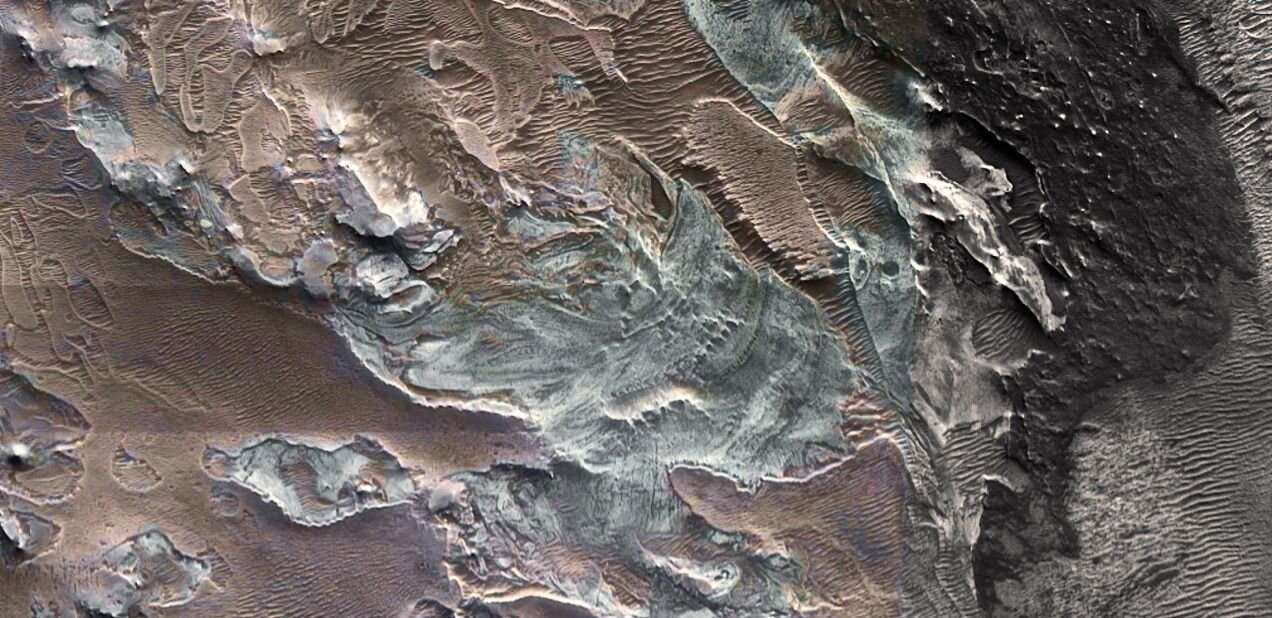Scientists have discovered that one of the bright spots at the equator of Mars has all the signs of a glacier. However, it is still unknown whether the ice itself remained under the layer of sulfates, or all that scientists see is only its “ghost”.

White spots on the Martian equator
During the 45th Lunar and Planetary Conference held in Woodland, Texas, scientists reported the discovery of a relic glacier near the equator of Mars. This news claims to be sensational, since it is known that water ice cannot exist on the surface of the planet in this area.
In fact, everything is more complicated. We are talking about one of the light deposits that are quite common in this area. Most of them consist of sulfates formed as a result of ancient volcanic activity.
However, for light deposits that are located in the eastern part of the Labyrinth of Night, the researchers have found interesting features: crevasse fields and moraine bands. They indicate that it could be a glacier 6 km long and 4 km wide.
How and when the glacier formed
So far, scientists are sure that this glacier definitely existed in the past. According to their estimates, it was in the Amazonian era, from 3.5 to 2 billion years ago. Then volcanic activity was observed in the area where it existed. Ash fell on the surface of the ice and reacted with it, forming a layer of sulfates.
Time passed, and the winds blew away the excess ash and exposed this layer of sulfates. That is, all these cracks and furrows on a light background that scientists see now are just traces of ice that once existed here. In fact, we see only the “ghost” of the glacier.
But scientists are confident that the discovery may still indicate a much larger amount of water ice near the surface of Mars. It can be stored under a layer of sulfates that reliably protect it from evaporation.
At least on Earth, a similar relic glacier is known for the bottom of a salt lake in South America. Whether this is possible for Mars can only be shown by further research.
According to phys.org.
Follow us on Twitter to get the most interesting space news in time
https://twitter.com/ust_magazine

